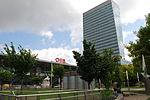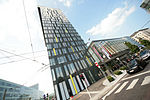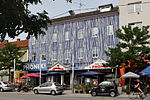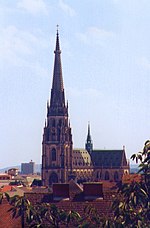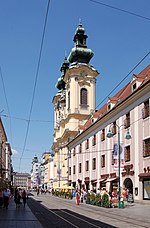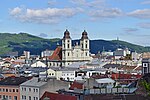Führermuseum

The Führermuseum or Fuhrer-Museum (English: Leader's Museum), also referred to as the Linz art gallery, was an unrealized art museum within a cultural complex planned by Adolf Hitler for his hometown, the Austrian city of Linz, near his birthplace of Braunau. Its purpose was to display a selection of the art bought, confiscated or stolen by the Nazis from throughout Europe during World War II. The cultural district was to be part of an overall plan to recreate Linz, turning it into a cultural capital of Nazi Germany and one of the greatest art centers of Europe, overshadowing Vienna, for which Hitler had a personal distaste. He wanted to make the city more beautiful than Budapest, so it would be the most beautiful on the Danube River, as well as an industrial powerhouse and a hub of trade; the museum was planned to be one of the greatest in Europe.The expected completion date for the project was 1950, but neither the Führermuseum nor the cultural centre it was to anchor were ever built. The only part of the elaborate plan which was constructed was the Nibelungen Bridge, which is still extant.
Excerpt from the Wikipedia article Führermuseum (License: CC BY-SA 3.0, Authors, Images).Führermuseum
Bahnhofplatz, Linz Innere Stadt
Geographical coordinates (GPS) Address Nearby Places Show on map
Geographical coordinates (GPS)
| Latitude | Longitude |
|---|---|
| N 48.290139 ° | E 14.291981 ° |
Address
Linz Hauptbahnhof
Bahnhofplatz
4020 Linz, Innere Stadt
Upper Austria, Austria
Open on Google Maps
